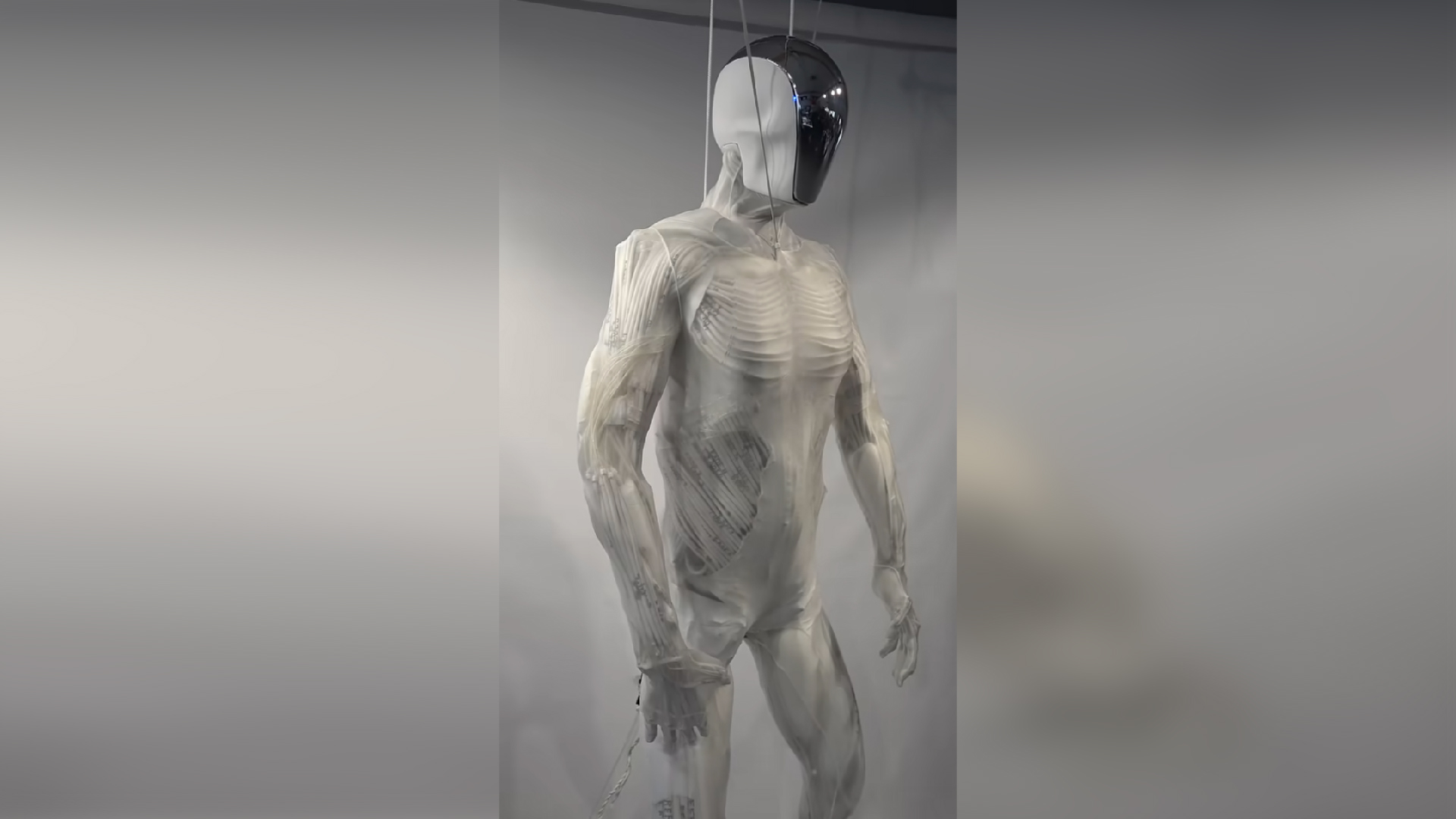World's 1st mechanical qubit uses no light or electronics. It could lead to ultra-precise gravity-sensing tech.
Scientists have created a single unit of quantum information using a superconducting circuit and a vibrating sapphire crystal.

Scientists have created the world's first mechanical qubit: a tiny, moving system that stores quantum information using vibrations instead of electric currents or light.
Qubits are the fundamental units of quantum information. Unlike the bits you'd find in a classical computer, qubits can exist as 0, 1, or a superposition of both, thanks to the weird inner workings of quantum mechanics and entanglement.
Traditionally, these are made from superconducting circuits, charged atoms (ions), or light particles (photons). The new mechanical qubit, however, uses phonons — a type of "quasiparticle" — generated by vibrations within a precisely engineered sapphire crystal.
A quasiparticle is a concept used to describe the behavior and interactions of a group of particles as if they were acting as a single particle. In this case, phonons represent quasiparticles that essentially serve as carriers of vibrational energy.
The breakthrough could pave the way for ultra-sensitive sensor technologies capable of detecting forces like gravity, as well as new methods for maintaining stability in quantum computers for longer periods, the scientists said. They published their study Nov. 14 in the journal Science.
Related: Will we ever have quantum laptops?
Mechanical systems have historically been considered too challenging to be used as qubits because, thanks to the principles of quantum mechanics, they are never completely still. This means there is always residual motion that needs to be accounted for and controlled in order for them to work at the quantum level.
Sign up for the Live Science daily newsletter now
Get the world’s most fascinating discoveries delivered straight to your inbox.
Likewise, mechanical oscillators — devices that store and transfer energy in the form of phonons — are typically subject to harmonic vibrations at evenly spaced energy levels. This is an issue, the scientists explained, because uniform spacing makes it difficult to isolate the two energy states needed to represent the 0 and 1 of a qubit.
"[The challenge] is whether you can make the energy levels unequally spaced enough that you can address two of them without touching the others," study co-author Yiwen Chu, a physicist at ETH Zürich, told Science.
The researchers tackled this problem by creating a "hybrid" system, coupling a sapphire crystal resonator measuring 400 micrometers (0.4 mm) with a superconducting qubit, and tuning the two to interact at slightly offset frequencies. When the resonator and qubit interacted, it blended their quantum states, resulting in unevenly spaced energy levels in the resonator — a phenomenon known as "anharmonicity."
This enabled the researchers to isolate two distinct energy states, effectively turning the resonator into a mechanical qubit.
While the mechanical qubit could hold and manipulate quantum information, the system’s fidelity — a measure of how accurately it performs quantum operations — was recorded as just 60%. By comparison, state-of-the-art superconducting qubits often achieve fidelities above 99%.
Even so, mechanical qubits may offer unique advantages, the scientists said. For instance, they can interact with forces like gravity in ways that other quantum systems cannot, making them promising candidates for the development of highly sensitive quantum sensors.
Mechanical qubits may also be able to store quantum information for longer periods of time, they said. This is critical for maintaining coherence — a measure of how long a system can stay stable and perform calculations using quantum data without interference.
The researchers are now working to link multiple mechanical qubits together to perform basic calculations, which they said would mark a key step toward practical applications for the technology.
Owen Hughes is a freelance writer and editor specializing in data and digital technologies. Previously a senior editor at ZDNET, Owen has been writing about tech for more than a decade, during which time he has covered everything from AI, cybersecurity and supercomputers to programming languages and public sector IT. Owen is particularly interested in the intersection of technology, life and work – in his previous roles at ZDNET and TechRepublic, he wrote extensively about business leadership, digital transformation and the evolving dynamics of remote work.











